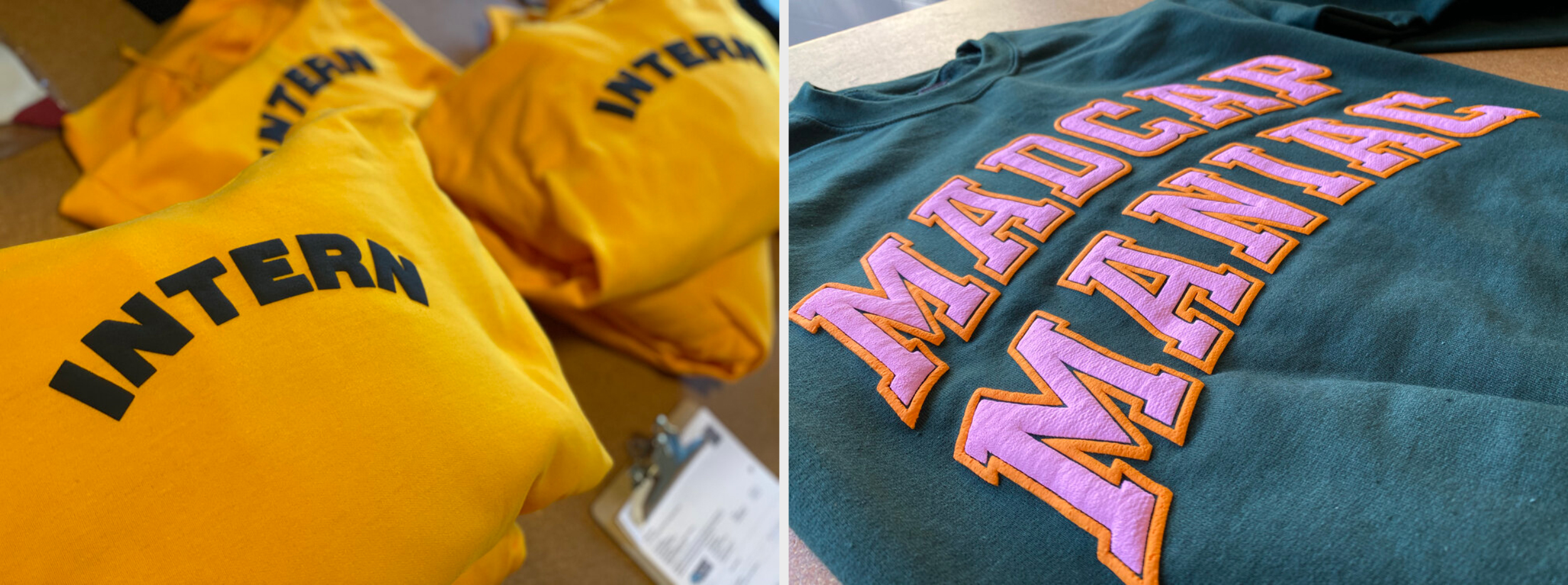Puff Screen Printing

Puff Screen Printing - Puff Screen Printng does not use ink – it's an additive, mixed into plastisol ink before printing. At around 320 degrees Fahrenheit, the print 'puffs' to form a 3D embossed texture that stands out from the fabric. We can enhance your design with a bright, opaque look and a unique, embossed texture.
How Does It Work?
Puff ink enhances screen printing on garments with a three-dimensional effect. The process involves following standard screen printing steps used for water-based inks.
You can use puff ink across the entire artwork, or you can choose specific elements or colors of the design to give it the desired effect to bring more attention or ‘pop’ to a particular part of the artwork.
When using puff ink for printing, one challenge is matching the precise Pantone ink colors compared to water-based ink. The puff ink additive alters colors differently, with lighter Pantone shades typically being easier to replicate than darker ones.



